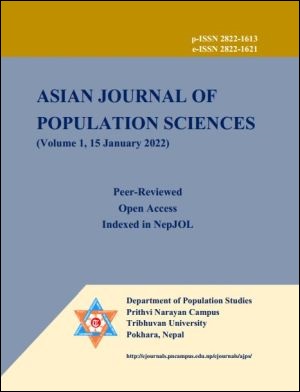Remittances and Development: Mirage of Prosperity in Dalit Community of Kaski District
DOI:
https://doi.org/10.3126/ajps.v1i1.43588Keywords:
Socio-cultural model, bidesh, remittance reliance, unsustainable prosperityAbstract
This article examines the propensities in international labour migration, remittances usage patterns and the influence of remittances on Dalit livelihood. Most Dalit groups of Nepal have their traditional occupational skills, but due to limited market access and the easy availability of cheap international products, their traditional occupations have been lost or threatened that has deteriorated livelihoods and the chances of development. Further, historic relegation, lower education levels, caste discrimination and sectarian hierarchy has curtailed better jobs opportunities in Nepal, compelling them to migrate abroad for work. Despite the role of remittances in alleviating caste/class discrimination and supporting family livelihoods, there has been a modest improvement in the human, educational and financial assets of Dalit households. The scenario of poor educational, economic, and human status, low participation in social and development sectors is evidence of the inability of remittances to solve livelihood problems. The rhetoric of permanent prosperity through foreign employment has proved a fiasco and a mirage of unsustainable prosperity rather than prospects of enduring genuine fortune. In the absence of productive and sustainable remittance use pattern, labour migration has become an addictive practice with high dependency on foreign labour and upsurge of consumerism that has created insecurity in livelihoods. A socioeconomic structural adjustment is mandatory to augment community economy along with human and social capital enrichment strategies that will pave the way to break the poverty and unemployment cycle. The prerequisites are the development and effective implementation of strategies that facilitate the maintenance of traditional skill-based jobs at home and policies using remittances.
Downloads
Downloads
Published
How to Cite
Issue
Section
License
Copyright (c) 2022 Prakash Upadhyay

This work is licensed under a Creative Commons Attribution-ShareAlike 4.0 International License.




